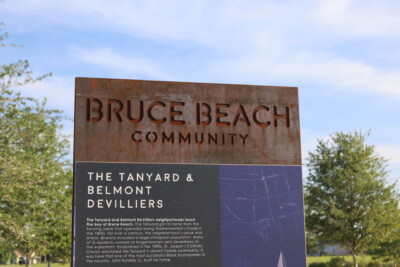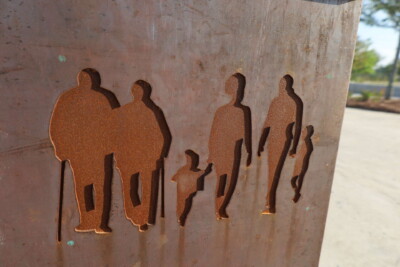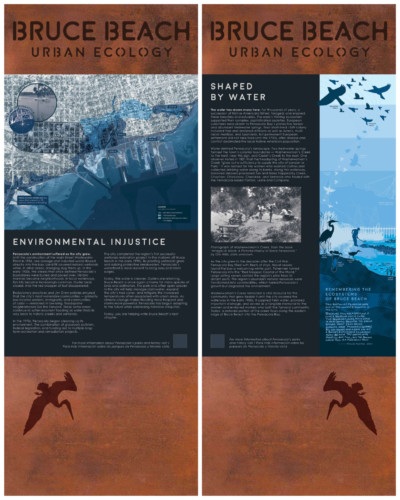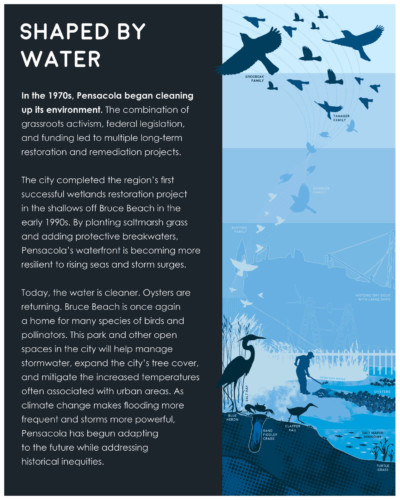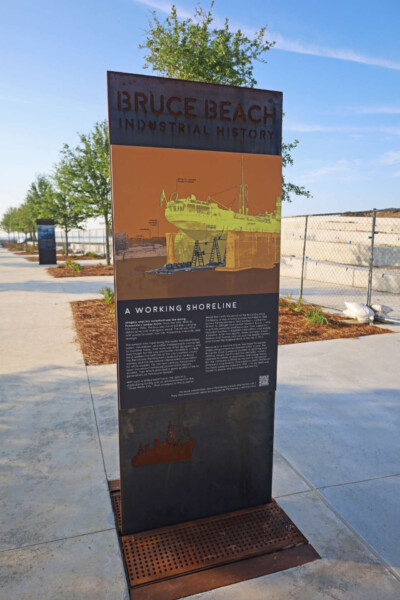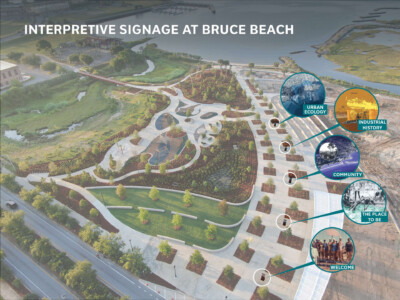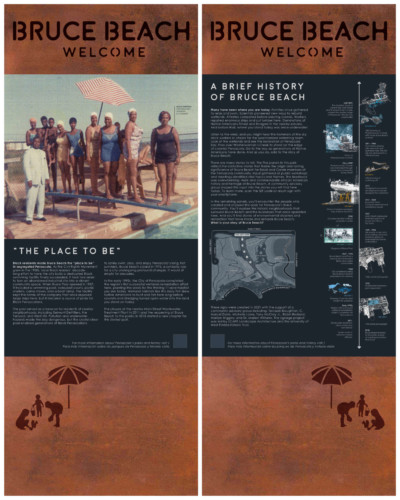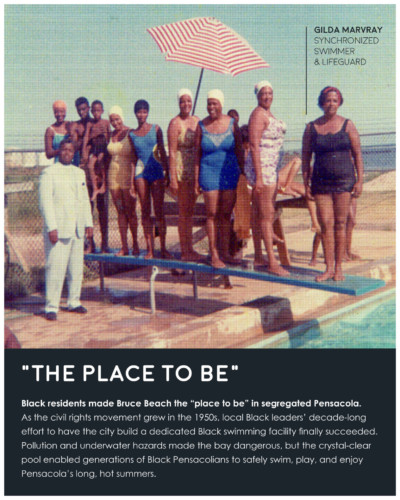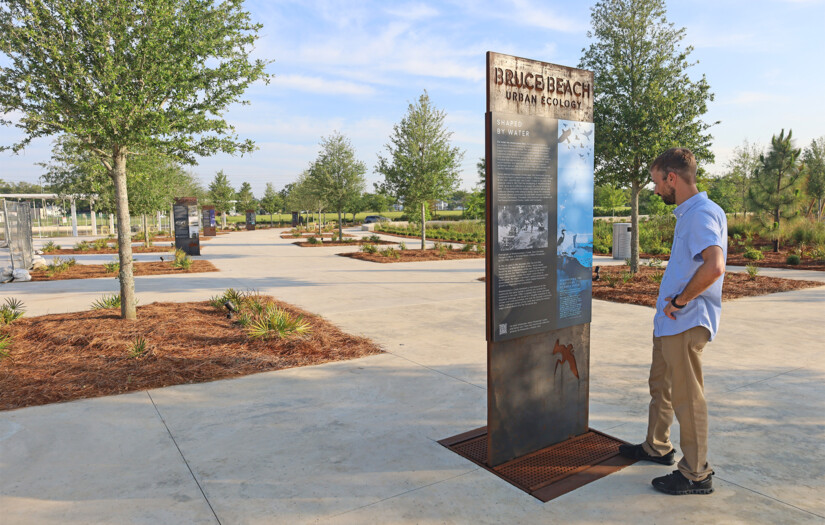For decades, Bruce Beach has been a key site for coastal recreation in Pensacola, with a rich history of use by the city’s Black community. As part of the park’s redesign, SCAPE developed a series of five double-sided signs that explore the history of Bruce Beach, collaborating with local historians at the University of West Florida Historic Trust and a community advisory group to identify common goals and curate content for the signs. The interpretive signage details the site’s marshy beginnings, its industrial history, its evolution as a recreational center, and its reopening today. The signs also explore the origin and lasting significance of Bruce Beach for Black, Indigenous, and Creole members of the Pensacola community.
Positioned along the promenade leading to the water’s edge, the signage invites visitors to engage with the history of this community hub. During segregation in Pensacola, Bruce Beach was the city’s only Black beach—a much-beloved recreational space with a steep drop-off close to the shore. As the Civil Rights Movement grew in the 1950s, local Black leaders and community advocates finally succeeded in a decades-long effort: to build a safer swimming facility on the site serving Black Pensacolans. Open from 1957 to 1975, Bruce Pool was “the place to be” come summer. After its closure due to lack of funding and mounting repair costs, the site sat empty for decades, reopening to the public in 2018. The interpretive signage is part of two catalyst projects identified to move forward through the City of Pensacola as part of the Pensacola Waterfront Framework Plan. The Florida Coastal Management Program funded this project with a grant from the NOAA Office of Ocean and Coastal Management awarded under the Coastal Zone Management Act.
Client
- City of Pensacola, Florida
Collaborators
University of West Florida Historic Trust: Dr. Jamin Wells, Joe Vinson
Community Advisory Group: Councilwoman Teniadé Broughton, Pastor C. Marcel Davis, Michelle Lowe, Tony McCray, Jr., Robin Reshard, Marilyn Wiggins, Dr. Marion Williams
HDR
